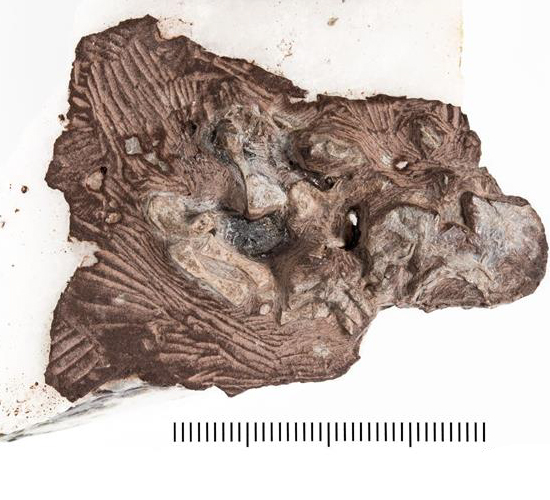Researchers have scientifically described a new taxon of amphibian from the Lower Permian of Germany. The animal has been named Bromerpeton subcolossus. Researchers from the Museum für Naturkunde in Berlin (Germany) in collaboration with colleagues from the United States suggest that this small tetrapod probably spent much of its time underground.

Bromerpeton subcolossus
A block of undescribed fossils was carefully cleaned and prepared at the Carnegie Museum of Natural History in Pittsburgh (USA). When these fossils were examined in detail it was discovered that they represented a new taxon. Bromerpeton has been classified as a member of the Recumbirostra clade.
The fossil material comes from the famous “Bromacker” location in Thuringia, central Germany. The siltstones and sandstones preserve both trace and body fossils of early tetrapods. More than a dozen new species have been named and described. This fossil site was formed by the deposition of sediments in a high plateau environment. Most Permian vertebrate fossil sites represent lowland ecosystems close to bodies of water.
Computed tomography (CT) scans revealed an exceptionally well-preserved right forelimb with five fingers. This is an unusual characteristic within the Recumbirostra clade. Most have only three or four digits on the manus.
Lead author of the paper, Dr Mark MacDougall (Museum für Naturkunde – Berlin), explained that Bromerpeton subcolossus was less than fifteen centimetres in length. Its skull was just two centimetres long.
Fossorial (Burrowing) Adaptations
Despite being diminutive, Bromerpeton possessed sturdy limbs with a broad manus (hand) and pointed claws. The researchers postulate that Bromerpeton subcolossus dug burrows and spent much of its time underground. The fossil material is estimated to be around 290 million years old (Lower Permian).
Dr Mark MacDougall remarked:
“Bromerpeton may be small, but it provides a lot of new information about the evolution and ecology of early tetrapods and in particular the Recumbirostra, a group that has received a lot of attention in recent years. Our discovery also contributes to understanding the diversity of the Lower Permian Bromacker ecosystem.”
Everything Dinosaur acknowledges the assistance of a media release from the Museum für Naturkunde (Berlin) in the compilation of this article.
The scientific paper: “A new recumbirostran ‘microsaur’ from the lower Permian Bromacker locality, Thuringia, Germany, and its fossorial adaptations” by Mark MacDougall, Andréas Jannel, Amy Henrici, David S Berman, Stuart S. Sumida, Thomas Martens, Nadia Fröbisch and Jörg Fröbisch published in Scientific Reports.
Visit the Everything Dinosaur website: Everything Dinosaur.






Leave A Comment